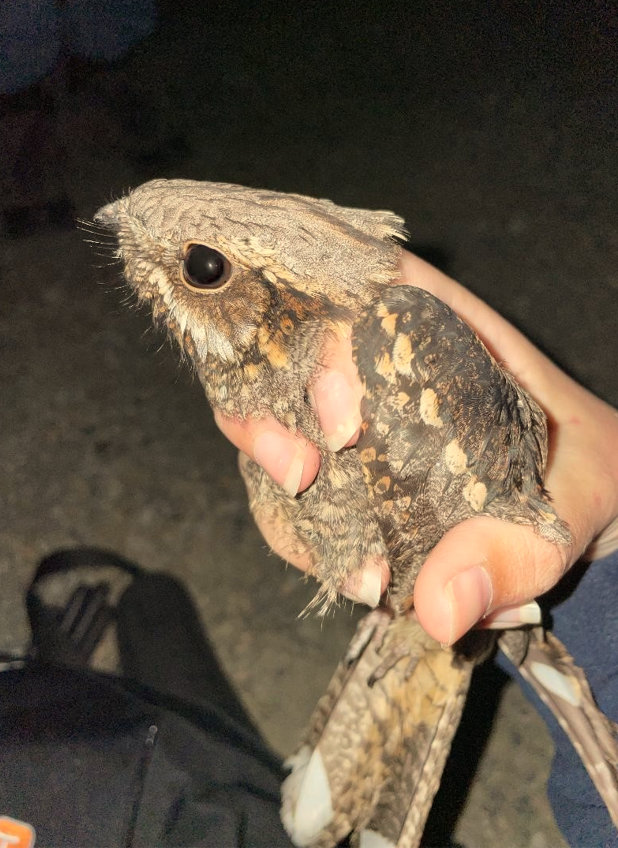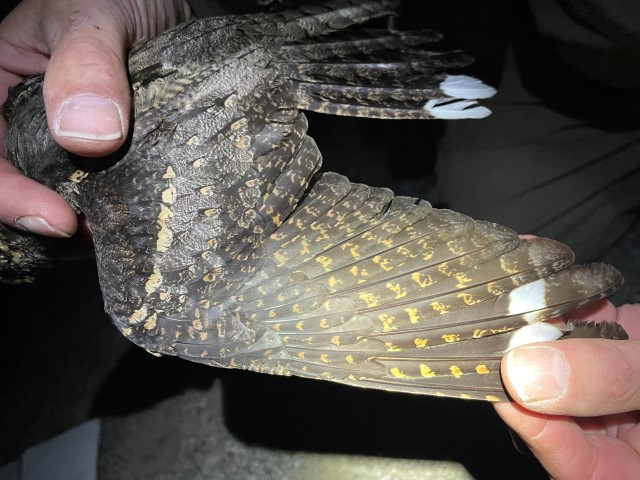Nightjar returning to Arran
Reports

Hearing a Nightjar used to be a not uncommon experience in Arran, but in the latter part of the twentieth century there was a decline. In 1980, nine churring Nightjar were reported from Merkland. In 1984, eight pairs were reported but the rest of the 1980s show a decline with four or five pairs in 1985 and three or four pairs in 1987 and one calling male in 1988. Single birds continued to be reported mainly in the Merkland area until 1995. In 1996 there no reports from Merkland but two from elsewhere. The last report in 1990s was one in 1998 at Maol Donn. There was then a gap with no records until 2013 when one was calling at Merkland from 17 June to 26 June 2013. In 2017 there was one report. In June 2021 there was more encouraging news. In a clear-felled area in the south of the island between 24 and 26 June Nightjars were heard churring, contact calls were heard, breeding was confirmed, and one male was caught under license photographed and ringed.
Nightjars are birds of legend including the widely held belief that Nightjars sucked the milk of grazing animals. Thus, its other name “Goatsucker”. In reality, Nightjars feed on insects, mainly larger moths. Nightjars migrate to Britain from Africa and return there after rearing their chicks. They arrive in Scotland in late May and early June when the moth population explodes. They are most active at the same times of day as moths, at dawn and at dusk. With their large eyes, huge gape surrounded by “whiskers” they are well adapted for catching their prey.
Nightjars are rarely seen during daylight. Normally during the day, they remain motionless on the ground, relying on their amazing camouflage - feather patterns that look like dead leaves and old tree bark - to avoid detection. But at night when they are 'churring', they often perch on the branch of a prominent tree and can be picked out against the night sky.
Encountering Nightjar in the gloaming is a magic birding moment if you can thole the inevitable midges.
